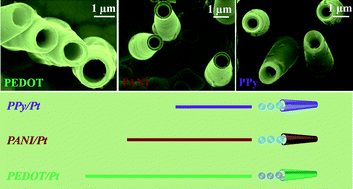Polymer-based tubular microbots: role of composition and preparation†
Abstract
The influence of the composition and electropolymerization conditions upon the propulsion of new template-prepared

* Corresponding authors
a
Department of Nanoengineering, University of California San Diego, San Diego, CA 92093, USA
E-mail:
josephwang@ucsd.edu
Fax: +1-858-534-9553
Tel: +1-858-246-0128
The influence of the composition and electropolymerization conditions upon the propulsion of new template-prepared

 Please wait while we load your content...
Something went wrong. Try again?
Please wait while we load your content...
Something went wrong. Try again?
W. Gao, S. Sattayasamitsathit, A. Uygun, A. Pei, A. Ponedal and J. Wang, Nanoscale, 2012, 4, 2447 DOI: 10.1039/C2NR30138E
To request permission to reproduce material from this article, please go to the Copyright Clearance Center request page.
If you are an author contributing to an RSC publication, you do not need to request permission provided correct acknowledgement is given.
If you are the author of this article, you do not need to request permission to reproduce figures and diagrams provided correct acknowledgement is given. If you want to reproduce the whole article in a third-party publication (excluding your thesis/dissertation for which permission is not required) please go to the Copyright Clearance Center request page.
Read more about how to correctly acknowledge RSC content.
 Fetching data from CrossRef.
Fetching data from CrossRef.
This may take some time to load.
Loading related content
